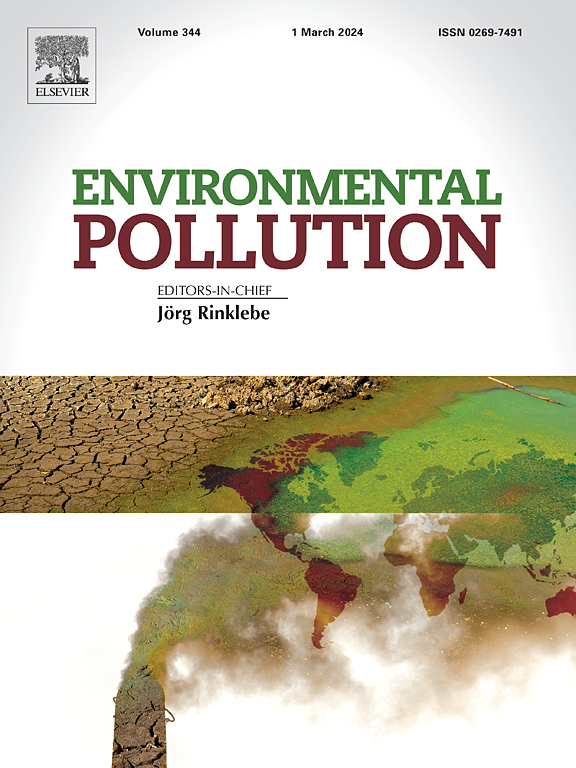Efficiency of microbial fermentation on microbial shifts, enzymatic activity, and transcriptions in black soldier fly larvae during the sugarcane waste conversion
IF 7.3
2区 环境科学与生态学
Q1 ENVIRONMENTAL SCIENCES
引用次数: 0
Abstract
Sugarcane trash, consisting mainly of dried leaves, tops and cans, is often burned in the field, posing serious risks to human health, contributing to environmental pollution, and depleting soil nutrients. Black soldier fly larvae (BSFL) offer a promising solution for organic waste management by converting it into insect proteins. This study aimed to develop a microbial fermentation method to utilize sugarcane waste as feed for BSFL and investigate underlying mechanisms. Our results revealed that all fermented groups exhibited enhanced growth and developmental performance, with the combination of Bacillus subtilis, Enterococcus faecalis, and Saccharomyces cerevisiae leading to the highest increases in larval body weight, survival rate, substrate conversion efficiency, and protein content compared to the unfermented group. Metagenomic analysis revealed a notable increase in the phylum Firmicutes, along with its beneficial strains such as Bacillus licheniformis, B. safensis, B. pumilus, Cytobacillus kochii, and Lysinibacillus fusiformis, in the gut of BSFL reared on fermented sugarcane waste, leading to improved gut homeostasis and reduced pathogenic loads. Additionally, the BSFL fed with fermented sugarcane waste exhibited high abundances of carbohydrate-active enzymes (CAZymes) involved in cellulose, hemicellulose, and starch degradation at both class and family levels. Transcriptome analysis further indicated the upregulation of key genes associated with key physiological processes, such as carbohydrate metabolism, chitin biosynthesis, and defense mechanisms. Collectively, these findings demonstrate the synergistic potential of microbial fermentation and BSFL for sustainable sugarcane waste management while advancing the understanding of host-microbe-diet interactions in insect-based bioconversion systems.


微生物发酵对甘蔗废弃物转化过程中黑虻幼虫微生物迁移、酶活性和转录的影响
甘蔗垃圾主要由干叶子、顶部和罐组成,经常在田间焚烧,对人体健康构成严重风险,造成环境污染,并消耗土壤养分。黑兵蝇幼虫(BSFL)通过将有机废物转化为昆虫蛋白质,为有机废物管理提供了一个很有前途的解决方案。本研究旨在开发一种利用甘蔗废弃物作为BSFL饲料的微生物发酵方法,并探讨其机理。结果表明,所有发酵组的生长和发育性能都有所提高,其中枯草芽孢杆菌、粪肠球菌和酿酒酵母的组合在幼虫体重、存活率、底物转化效率和蛋白质含量方面的提高幅度最大。宏基因组分析显示,在发酵甘蔗废弃物饲养的BSFL肠道中,厚壁菌门及其有益菌株如地衣芽孢杆菌、B. safensis、B. pumilus、kochii细胞芽孢杆菌和梭状芽孢杆菌等显著增加,改善了肠道内稳态,降低了致病负荷。此外,以发酵甘蔗废料喂养的BSFL在类和科水平上都表现出高丰度的参与纤维素、半纤维素和淀粉降解的碳水化合物活性酶(CAZymes)。转录组分析进一步表明,与碳水化合物代谢、几丁质生物合成和防御机制等关键生理过程相关的关键基因上调。总的来说,这些发现证明了微生物发酵和BSFL在可持续甘蔗废物管理方面的协同潜力,同时促进了对昆虫生物转化系统中宿主-微生物-饮食相互作用的理解。
本文章由计算机程序翻译,如有差异,请以英文原文为准。
求助全文
约1分钟内获得全文
求助全文
来源期刊

Environmental Pollution
环境科学-环境科学
CiteScore
16.00
自引率
6.70%
发文量
2082
审稿时长
2.9 months
期刊介绍:
Environmental Pollution is an international peer-reviewed journal that publishes high-quality research papers and review articles covering all aspects of environmental pollution and its impacts on ecosystems and human health.
Subject areas include, but are not limited to:
• Sources and occurrences of pollutants that are clearly defined and measured in environmental compartments, food and food-related items, and human bodies;
• Interlinks between contaminant exposure and biological, ecological, and human health effects, including those of climate change;
• Contaminants of emerging concerns (including but not limited to antibiotic resistant microorganisms or genes, microplastics/nanoplastics, electronic wastes, light, and noise) and/or their biological, ecological, or human health effects;
• Laboratory and field studies on the remediation/mitigation of environmental pollution via new techniques and with clear links to biological, ecological, or human health effects;
• Modeling of pollution processes, patterns, or trends that is of clear environmental and/or human health interest;
• New techniques that measure and examine environmental occurrences, transport, behavior, and effects of pollutants within the environment or the laboratory, provided that they can be clearly used to address problems within regional or global environmental compartments.
 求助内容:
求助内容: 应助结果提醒方式:
应助结果提醒方式:


